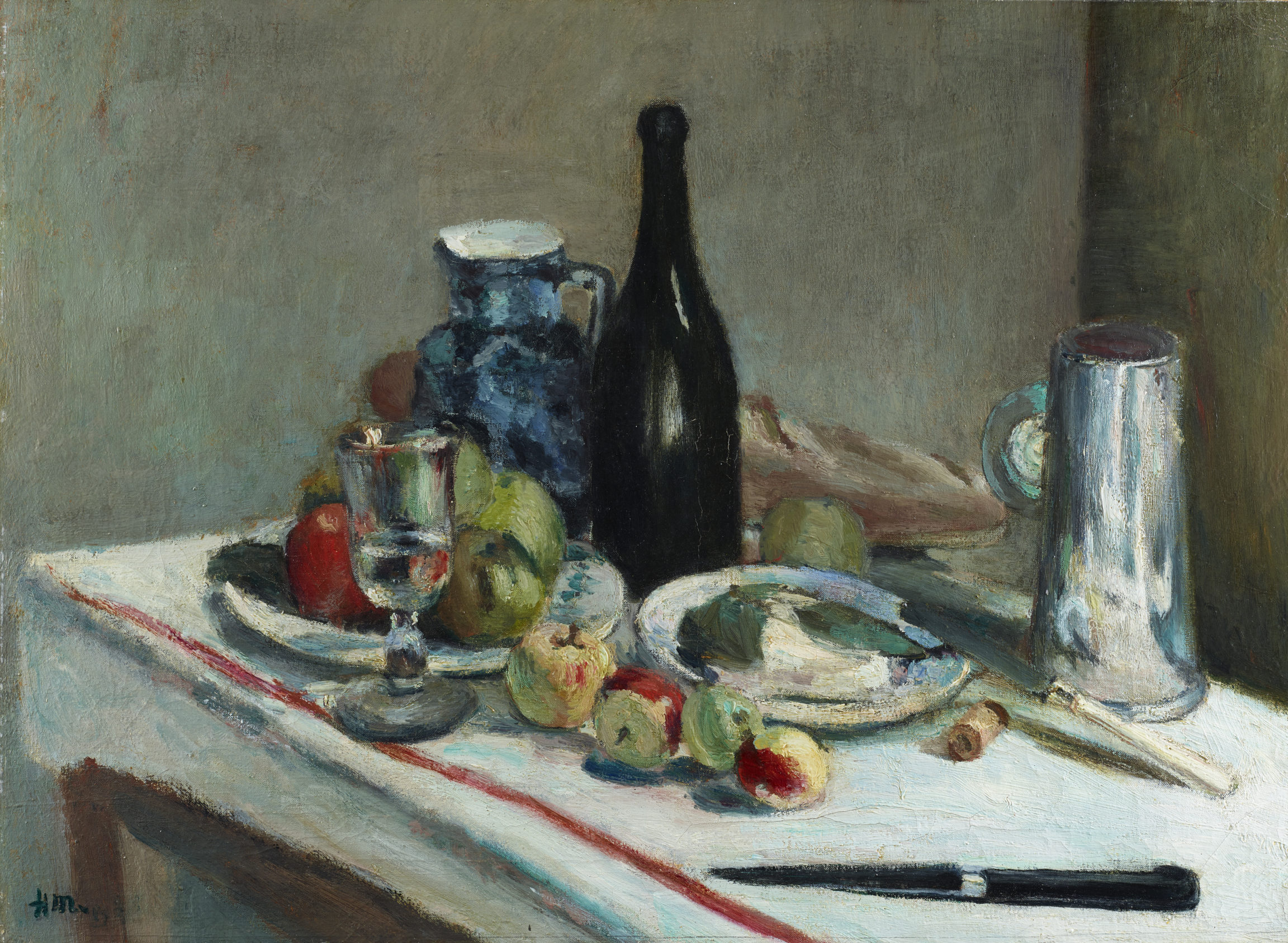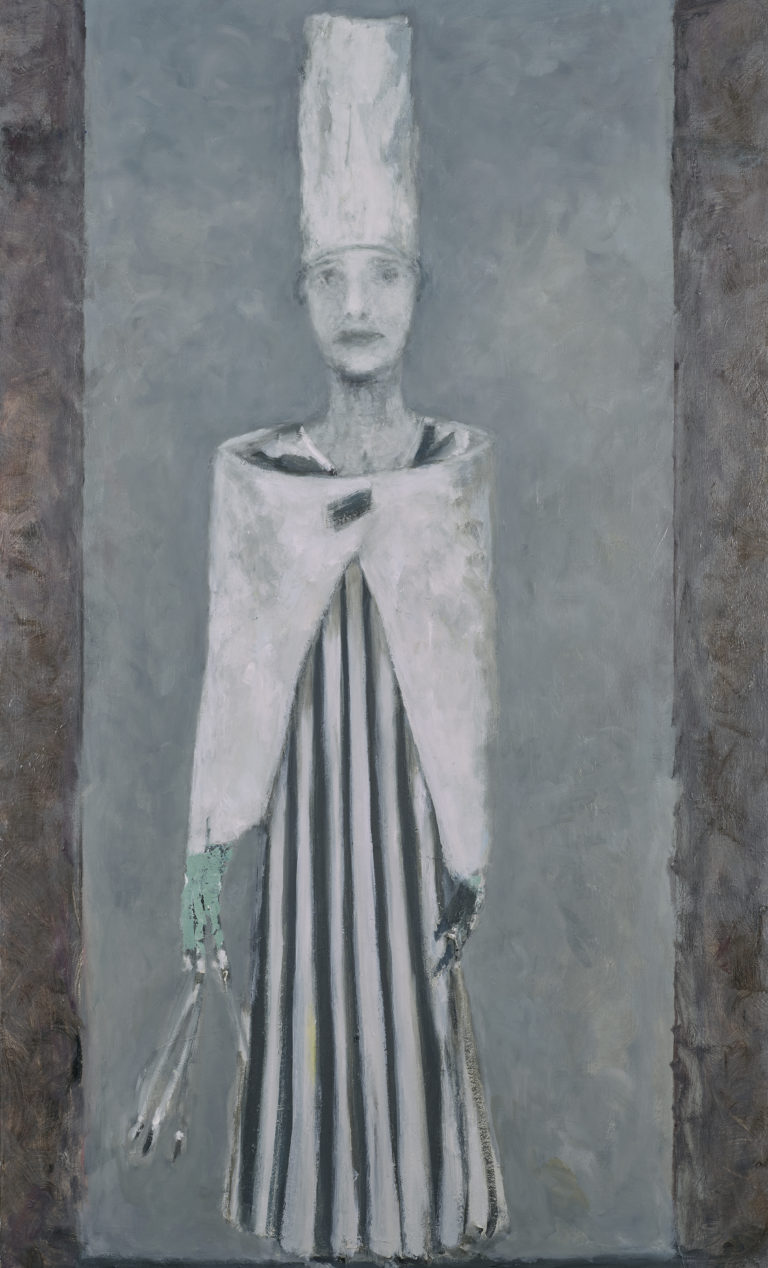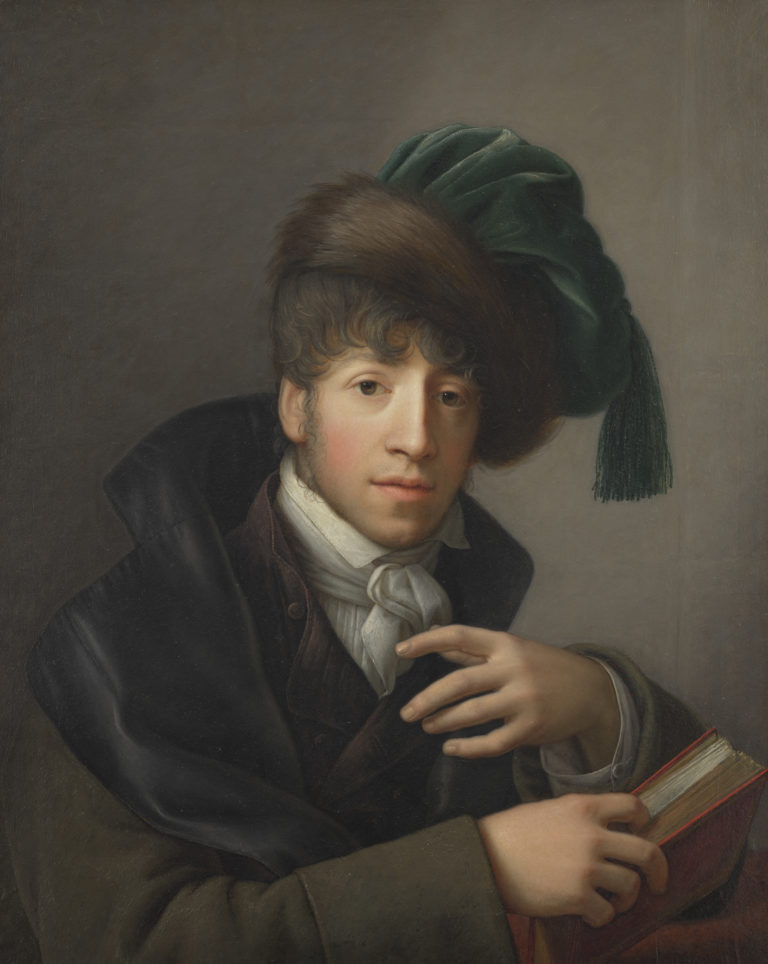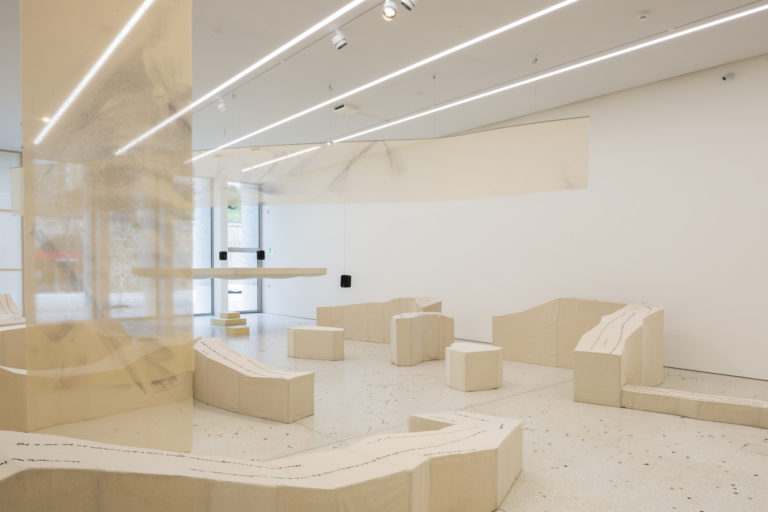Bibliography
Serge Guilbaut, Chatting with Henri Matisse: the Lost 1941 Interview. Henri Matisse with Pierre Courthion, Los Angeles, The Getty Research Institute, 2013.
Erika Billeter (ed.), Chefs-d’œuvre du Musée cantonal des Beaux-Arts, Lausanne. Regards sur 150 tableaux, Lausanne, Musée cantonal des Beaux-Arts, 1989: 206-207.
Alfred H. Barr Jr., Matisse his art and his public, New York, The Museum of Modern Art, 1966: 296.




Henri Matisse spent hours at the Louvre copying the old masters as his teacher at the School of Fine Arts in Paris, Gustave Moreau, had advised him to do. His early still lifes reflect the influence of Jean Baptiste Siméon Chardin, an artist he admired greatly. This still life with a black knife contains several virtuoso displays of skill, such as the reflections in the glass and pewter pot, revealing Matisse’s interest in seventeenth-century Dutch still life painting.
The tableware and food are grouped together in one compact space. The curves of the fruit and tableware counterbalance the diagonal of the table leading down to the bottom right-hand corner. The painting’s principal axes, based on ninety-degree angles, are laid out in black, with the knife lying parallel to the table’s lower edge and the bottle standing proudly in the centre. Slanting lines are highlighted in the white of the table cloth and the second knife at the edge of the table. These form the backdrop for the painting’s main colours in shades of red, yellow, green and blue.
Matisse clearly enjoyed painting the various textures: the fabric of the white table cloth, the ceramic plates, the blue earthenware pitcher, the pewter pot, the glass bottle and the metal knife blades. The light, shining in from one side, reflects on their surfaces, creating a sense of chromatic harmony.
Nature morte au couteau noir presents a major milestone on Matisse’s journey from tonal values to pure colour in the years from 1895 to 1900. Using heavy brushstrokes from a palette of thick paints, Matisse gave colour wings. This painting’s reds, greens and yellows, though as yet discreet, herald the breakthrough of pure colour in Matisse’s work in the years to come.